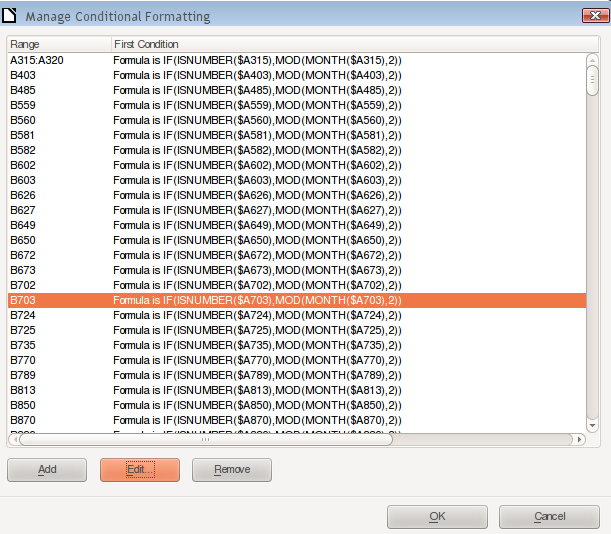Seems nobody is pressing foreward as a volunteer answering this question.
I, on the other hand, can only give a very unsatisfactory answer: We have to take it.
Conditional formatting was enhanced some time ago with the release of one of the 3.x versions.
Before that only 3 conditions were supported and there was no ‘Manager’ but just a simple dialogue. Editing an existing CF required knowig the exact range first (as I remeber - if correct). This may have helped to establish a reasonable restraint on using CF in a too complicated manner. In addition: We couldn’t see the mess we possibly had caused. These times are gone. The current implementation of CF is in my humble opinion not satisfactory (and rather a mess). I even think that some fundamental questions about consistency and viability are not sufficiently explored. What about overlapping, fragmentation, behaviour when ranges are filled … How to get that in fashion? Furthermore the formula editor inside the manager is causing headache now and then … Even if everything got clear we might need an extra ‘Guide’ of some 100 pages to explain it.
On the other hand CF is sometimes really a valuable means.
My suggestion: Use it with caution.
Introduce it late during the design of a new sheet.
If sheet editing is going on, call the CF-manager in not too long intervals. First delete cf ranges you don’t need any longer, collect (not so easy), simplify and adjust in time - as long as you have still clear in mind what you wanted to achieve.
Two or three conditional formats should be enough for a sheet. Who should evaluate all the ‘visibility’ they create?
Wait for the perfect final solution.

